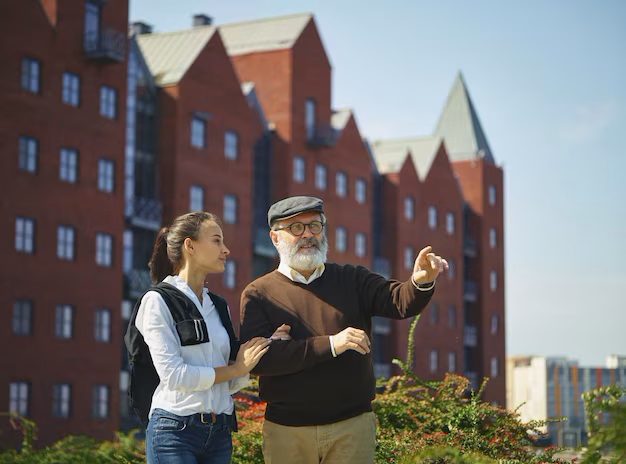In this day and age, our society is becoming increasingly attuned to the pressing need for understanding and solutions when it comes to matters of the heart. It is essential that we recognize and acknowledge the distressing reality that exists within our communities, one that can often go unnoticed or ignored. By shining a light on the topic, we hope to encourage open dialogue, education, and empathy as we seek to combat the prevalence of domestic abuse.
Within the realm of personal relationships, there exists a grave concern that permeates the lives of countless individuals. The issue at hand goes far beyond the realm of sporadic conflicts or trivial disagreements. Rather, it involves a complex web of power imbalances and emotional turmoil that individuals find themselves ensnared within.
It is crucial that we comprehend the intricate dynamics that underpin this form of violence, ensuring we approach the topic with sensitivity and understanding. By fostering an environment in which survivors feel safe to share their stories and seek the help they deserve, we can begin to dismantle the structures that perpetuate abuse.
Throughout this month, we take a collective stand against the pervasive silence that surrounds intimate partner abuse. Together, we strive to forge a path towards healing and empowerment for those affected. Join us in this crucial conversation as we work towards creating a society in which love, respect, and safety are the foundations upon which all relationships are based.
Domestic Violence: Breaking the Silence
Addressing the issue of domestic violence is crucial in order to bring an end to the cycle of abuse and create a safe space for survivors. This section aims to shed light on the importance of breaking the silence surrounding domestic violence and encourage open dialogue about this pressing issue.
| One of the main barriers in combating domestic violence is the silence that often shrouds it. Victims, out of fear or shame, may choose to suffer in silence, allowing the abuse to continue unchecked. The power dynamics within abusive relationships ensure that the victim’s voice is stifled, making it imperative for society to step up and break this silence. |
| Bringing domestic violence out of the shadows requires encouraging survivors to share their experiences and raising awareness about the resources and support available to them. Society must work together to create an environment where victims feel empowered to break the cycle of abuse and seek help. |
| Breaking the silence around domestic violence involves more than simply giving victims a platform to share their stories. It requires creating a culture that listens, believes, and supports survivors. By breaking the silence, we acknowledge that domestic violence is a pervasive issue that affects individuals from all walks of life, and that it is not something that should be hidden in the shadows. |
| In order for real change to happen, breaking the silence needs to extend beyond the victims and into communities, institutions, and even legislation. By openly discussing domestic violence, we can challenge societal norms and dismantle the systems that perpetuate abuse. |
| In conclusion, breaking the silence surrounding domestic violence is an integral step towards addressing and eradicating this widespread issue. By amplifying the voices of survivors and fostering an environment of support, we can work towards creating a society where domestic violence is not tolerated and victims are able to find safety and healing. |
The Importance of Raising Awareness
Increasing public knowledge and understanding about the issue at hand is essential in order to address and prevent it. By shining a light on the subject, individuals and communities can become better equipped to recognize, respond to, and ultimately eradicate the problem.
Building Empathy and Compassion
Raising awareness helps foster empathy and compassion towards those affected by the issue. When people have a better understanding of the challenges faced by survivors, they are more likely to offer support and assistance, both on an individual and societal level. Increased empathy lays the foundation for a more compassionate response to domestic violence.
Creating Collective Responsibility
By spreading knowledge about the issue, raising awareness helps to convey the message that domestic violence is not just a personal problem, but a societal one. Individuals are encouraged to recognize their role in preventing and addressing domestic violence, promoting collective responsibility within communities. This collective responsibility fosters a sense of shared accountability towards creating a safer and more supportive society for everyone.
| Benefits of Raising Awareness | |
|---|---|
| Empowers survivors to seek help | |
| Encourages bystander intervention | |
| Generates support for prevention programs and services | |
| Challenges societal norms and attitudes contributing to domestic violence |
Recognizing the Signs of Domestic Abuse
In this section, we will explore the indicators that might indicate the presence of domestic abuse within a relationship. It is important to be aware of these signs as they can often be subtle and easily overlooked. By recognizing the signs early on, we can take steps to address and prevent further harm.
Physical signs can include visible injuries such as bruises, cuts, or broken bones. However, it is also crucial to be aware of less visible signs such as frequent headaches, unexplained pain, or a change in behavior or appearance that may be indicative of chronic abuse.
Emotional signs may manifest as constant fear, anxiety, or depression. Victims of domestic abuse often experience a decrease in self-esteem and confidence, as well as feelings of helplessness and isolation. They may also exhibit changes in sleeping or eating patterns, have difficulty concentrating, or frequently apologize for the abuser’s behavior.
Behavioral signs can include a partner who is excessively controlling, possessive, or jealous. They may isolate the victim from friends and family, monitor their activities, or restrict their access to resources such as money or transportation. The abuser may also consistently blame the victim for their own abusive behavior, making it difficult for the victim to recognize the abuse or seek help.
Verbal signs encompass the use of demeaning, insulting, or threatening language towards the victim. The abuser may constantly criticize, humiliate, or belittle their partner as a means of establishing power and control. Verbal abuse can cause significant emotional damage and should not be dismissed or minimized.
Financial signs can involve the abuser controlling all the finances, making the victim financially dependent on them. They may prohibit the victim from working, stealing or withholding their money, or sabotaging their attempts to be financially independent. This form of abuse can make it incredibly challenging for the victim to leave the abusive relationship.
It is important to remember that domestic abuse can occur in any relationship, regardless of gender, age, or socioeconomic status. By being aware of the signs and educating ourselves, we can support victims and work towards creating a safer society for all.
Providing Support for Survivors
In the effort to raise awareness about domestic violence and its impact, it is essential to focus on providing support for survivors. This section aims to explore various ways in which individuals and communities can offer assistance and create a safe environment for those affected by domestic violence.
Empowering Survivors
One crucial aspect of supporting survivors is empowering them to regain control and rebuild their lives. It involves acknowledging their strength and resilience in overcoming the traumatic experiences they have endured. By providing resources and access to counseling and therapy, survivors can develop coping mechanisms, improve their emotional well-being, and enhance their self-esteem.
Community Engagement
Support for survivors of domestic violence should extend beyond the individual level and involve wider community engagement. Creating support groups, organizing awareness campaigns, and collaborating with local organizations can help raise awareness about the issue and provide survivors with a network of understanding individuals. By fostering a sense of belonging and solidarity, communities can effectively combat the isolation and stigma that survivors often face.
In conclusion, providing support for survivors of domestic violence is crucial in raising awareness and effectively addressing the issue. Empowering survivors and promoting community engagement are key strategies in helping them rebuild their lives and creating a society that no longer tolerates domestic violence.
Breaking the Cycle: Preventing Domestic Abuse
In this section, we will explore strategies and approaches aimed at ending the vicious cycle of domestic abuse. By developing a comprehensive understanding of the underlying causes and risk factors, we can take proactive steps to prevent and address domestic violence.
Building Awareness
One of the key elements in breaking the cycle of domestic violence is raising awareness about its prevalence and consequences. By educating individuals about the various forms of abuse, such as physical, emotional, and financial, we can empower them to recognize the warning signs and take action to protect themselves and others. It is essential to emphasize the importance of open dialogue, both within families and in the wider community, in order to challenge the culture of silence that often perpetuates abusive behavior.
Promoting Healthy Relationships
Another critical aspect of preventing domestic abuse is promoting healthy and respectful relationships. This involves teaching individuals about the principles of consent, boundaries, and effective communication. Encouraging empathy, understanding, and mutual respect within personal relationships can help break the cycle of violence by creating a safe and supportive environment. By fostering positive relationship dynamics and role-modeling healthy behaviors, we can empower individuals to form and maintain healthy partnerships.
Providing Support and Resources
Preventing domestic violence also requires the provision of accessible support and resources for both victims and perpetrators. This includes establishing helplines, shelters, counseling services, and legal assistance to ensure that individuals facing abuse have the necessary help and guidance to escape dangerous situations. Additionally, offering specialized programs aimed at rehabilitating perpetrators can address the root causes of violence and facilitate the development of healthier coping mechanisms.
Collaborating with Community Partners
Effective prevention efforts also rely on collaborations with key community partners, such as law enforcement agencies, healthcare providers, social workers, and educational institutions. By working together, these stakeholders can pool their expertise, share resources, and establish comprehensive protocols to identify, report, and respond to cases of domestic violence promptly. Collaboration also allows for the implementation of prevention programs in schools, workplaces, and community centers, ensuring that awareness and education efforts reach a broader audience.
Empowering Survivors
Lastly, breaking the cycle of domestic violence involves empowering survivors to regain control of their lives and ensuring their safety and well-being. Providing comprehensive support services, including counseling, financial assistance, and legal advocacy, can help survivors rebuild their lives and break free from the cycle of abuse. Empowering survivors also means advocating for systemic changes, such as improved legislation and policies, that protect their rights and hold perpetrators accountable.
By adopting a multi-faceted approach that combines awareness, prevention, support, collaboration, and empowerment, we can make significant strides in breaking the cycle of domestic violence and creating a safer and more inclusive society for all.
Taking Action: Resources for Help and Reporting
In this section, we will explore various avenues for taking action and seeking assistance in situations related to domestic violence. We will provide information on the different resources available to individuals who may be experiencing domestic violence, as well as options for reporting such incidents. It is important to take proactive steps to address this issue and support those who may be affected by it.
1. Support Organizations and Helplines
- Find local organizations that specialize in providing support and assistance to domestic violence survivors. These organizations offer confidential helplines, counseling services, and legal advocacy to those in need.
- Discover national helplines and hotlines that can offer immediate support and guidance, connecting individuals with resources and information on local support services.
- Learn about online communities and forums where survivors can share their experiences, seek advice, and find emotional support from others who have faced similar challenges.
2. Legal Options and Reporting
- Understand the legal options available for those experiencing domestic violence, such as obtaining a restraining order or filing for divorce. Explore the legal procedures and requirements involved in seeking protection and justice.
- Learn about the process of reporting domestic violence incidents to law enforcement authorities. Find out how to collect evidence, ensure personal safety, and navigate the legal system.
- Discover resources that can guide individuals through the process of seeking justice, including free or low-cost legal services and advocacy organizations.
Remember, taking action against domestic violence is crucial in creating safer communities and providing support for those impacted. By utilizing the resources available, we can promote awareness and work towards preventing and ending domestic violence in all its forms.
Question-answer: October 2015 is Domestic Violence Awareness Month
What actions are highlighted in the presidential proclamation during National Domestic Violence Awareness Month to combat intimate partner violence?
The presidential proclamation during National Domestic Violence Awareness Month highlights the dedication of the U.S. to combat intimate partner violence by strengthening legal frameworks, increasing funding for victim support services, and collaborating with organizations that work against violence towards women. It emphasizes the commitment to reducing domestic violence and supporting victims through comprehensive public health strategies and law enforcement efforts.
How does the Department of Justice contribute to domestic violence prevention during October’s Domestic Violence Awareness Month?
During October’s Domestic Violence Awareness Month, the Department of Justice contributes to domestic violence prevention by allocating resources to enhance the legal and support structures for victims. This includes funding for domestic violence hotlines, support for emergency shelters, and training for law enforcement on handling domestic violence cases sensitively and effectively.
What public health measures are advocated during National Domestic Violence Awareness Month to address the effects of physical violence in dating relationships?
During National Domestic Violence Awareness Month, public health measures are advocated to address physical violence in dating relationships by promoting education on healthy relationship behaviors and the warning signs of abuse. Campaigns and programs focus on reaching young adults and teens to raise awareness and prevent dating violence through collaboration with schools, community organizations, and online platforms.
What initiatives are emphasized in October for Domestic Violence Awareness Month to assist victims of these crimes?
In October, during Domestic Violence Awareness Month, a variety of initiatives are emphasized to assist victims of domestic violence. These include nationwide campaigns calling on all Americans to speak out against domestic violence and support local efforts. Service providers across the country increase their outreach, offering more resources and support to help victims find the necessary safety, legal aid, and healing services.
How do service providers address the hardship caused by domestic violence to promote health and safety for survivors?
Service providers address the hardship caused by domestic violence by offering comprehensive support services that aim to restore the health and safety of survivors. This includes emergency shelter, counseling, legal assistance, and medical care. These providers work tirelessly to create safe environments where victims can receive the help and healing they need to overcome the trauma of abuse.
What role does the president play in combating domestic violence, particularly in promoting the VAWA?
The president plays a critical role in combating domestic violence, notably through the promotion and support of the Violence Against Women Act (VAWA). By advocating for the renewal and strengthening of VAWA, the president ensures that there is continued national focus and funding for preventing sexual assault and domestic violence and supporting the victims of these crimes.
How do efforts to call on all Americans to speak out against domestic violence manifest during October?
During October, efforts to call on all Americans to speak out against domestic violence manifest through various public awareness campaigns and community events. These activities encourage individuals to learn about the signs of domestic violence, the importance of early intervention, and how to support local organizations that provide crucial services to victims.
In what ways do national surveys and studies by organizations like the Centers for Disease Control and Prevention contribute to understanding domestic violence?
National surveys and studies conducted by organizations such as the Centers for Disease Control and Prevention (CDC) are crucial for understanding the scope and impact of domestic violence. These studies provide valuable data on the prevalence, risk factors, and consequences of intimate partner violence, informing public health policies and prevention strategies to better address the needs of victims and reduce the incidence of violence nationally.







